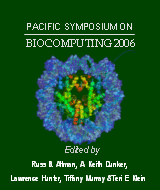Modeling and Simulation with Hybrid Functional Petri Nets of the Role of Interleukin-6 in Human Early Haematopoiesis
Troncale S, Tahi F, Campard D, Vannier JP, Guespin J
Laboratoire de Microbiologie de Rouen, France
Pac Symp Biocomput. 2006;:427-438.

Abstract
The regulation of human haematopoiesis is a complex biological system with numerous
interdependent processes. In vivo Haematopoietic Stem Cells (HSCs) selfrenew
so as to maintain a constant pool of these cells. It would be very interesting
to maintain these cells in vitro, in view of their therapeutical importance. Unfortunately,
there is currently no known process to activate HSCs self-renewal in
vitro.
Since the difficulties related to in vitro experiments, modeling and simulating this
process is indispensable. Moreover, the complexity of haematopoiesis makes it
necessary to integrate various functionalities: both discrete and continuous models
as well as consumption and production of resources. We thus focus on the use
of Hybrid Functional Petri Nets, which offer a number of features and flexibility.
We begin by modeling and simulating the role of a specific cytokine, interleukin-6,
in the regulation of early haematopoiesis. Results obtained in silico lead to the
disappearence of HSCs, which is in agreement with in vitro results.
[Full-Text PDF] [PSB Home Page]